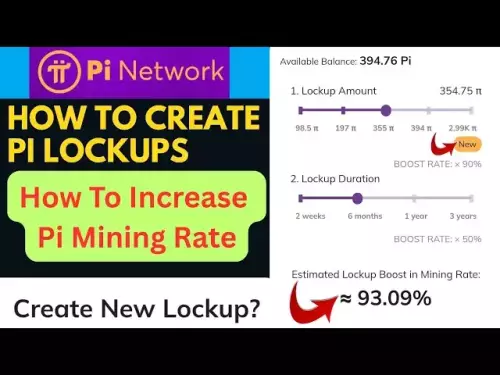-
 bitcoin
bitcoin $114779.865156 USD
2.30% -
 ethereum
ethereum $4226.519789 USD
2.39% -
 tether
tether $1.000545 USD
0.04% -
 xrp
xrp $2.890223 USD
0.92% -
 bnb
bnb $1030.029301 USD
2.95% -
 solana
solana $212.824944 USD
1.69% -
 usd-coin
usd-coin $0.999757 USD
0.01% -
 dogecoin
dogecoin $0.234961 USD
-0.27% -
 tron
tron $0.337174 USD
0.42% -
 cardano
cardano $0.804783 USD
0.09% -
 hyperliquid
hyperliquid $45.748770 USD
-2.85% -
 chainlink
chainlink $21.699170 USD
0.82% -
 ethena-usde
ethena-usde $1.001452 USD
0.08% -
 avalanche
avalanche $30.237800 USD
1.14% -
 stellar
stellar $0.372604 USD
1.52%
What are the trigger conditions for automatic liquidation of Coinbase positions?
Automatic liquidation on Coinbase occurs when a position's value falls below the maintenance margin or hits the calculated liquidation price, protecting against excessive losses.
Apr 11, 2025 at 03:56 pm
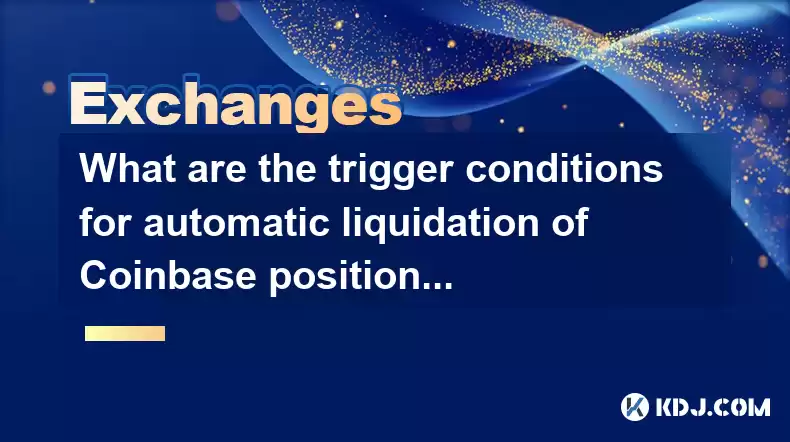
When trading on Coinbase, understanding the conditions that can lead to the automatic liquidation of your positions is crucial for managing risk and maintaining a healthy trading portfolio. Automatic liquidation occurs when certain predefined conditions are met, which are designed to protect both the trader and the platform from excessive losses. In this article, we will delve into the specific trigger conditions for automatic liquidation on Coinbase, providing detailed insights into how these mechanisms work and what traders can do to avoid them.
Understanding Margin and Leverage on Coinbase
Before diving into the trigger conditions for liquidation, it's important to understand the concepts of margin and leverage. Margin is the amount of funds required to open and maintain a leveraged position, while leverage allows traders to control larger positions with a smaller amount of capital. On Coinbase, traders can use leverage to amplify their potential returns, but this also increases the risk of liquidation if the market moves against their positions.
Trigger Conditions for Automatic Liquidation
The primary trigger condition for automatic liquidation on Coinbase is when the value of a trader's position falls below the maintenance margin requirement. This requirement is a percentage of the total position value that must be maintained in the account to keep the position open. If the account balance drops below this threshold due to market movements, Coinbase will automatically liquidate the position to prevent further losses.
Another trigger condition is when the liquidation price is reached. The liquidation price is calculated based on the entry price, the amount of leverage used, and the maintenance margin requirement. If the market price hits this liquidation price, the position will be automatically closed to limit losses.
How Coinbase Calculates Liquidation Price
The liquidation price on Coinbase is determined by a formula that takes into account the entry price, the leverage used, and the maintenance margin requirement. For a long position, the liquidation price is calculated as follows:
- Liquidation Price for Long Position: Entry Price (1 - Maintenance Margin Requirement / Leverage)
For a short position, the formula is slightly different:
- Liquidation Price for Short Position: Entry Price (1 + Maintenance Margin Requirement / Leverage)
These formulas ensure that the position is liquidated before the account balance falls below the maintenance margin requirement, protecting both the trader and the platform from excessive losses.
Factors Affecting Liquidation Risk
Several factors can increase the risk of automatic liquidation on Coinbase. Market volatility is a significant factor, as rapid price movements can quickly push a position towards the liquidation price. Position size and leverage also play crucial roles; larger positions and higher leverage increase the risk of liquidation.
Additionally, account balance and available margin are important considerations. If the account balance is close to the maintenance margin requirement, even small market movements can trigger liquidation. Traders should monitor their account balance and available margin closely to avoid unexpected liquidations.
Strategies to Avoid Automatic Liquidation
To minimize the risk of automatic liquidation, traders can employ several strategies. Reducing leverage is one of the most effective ways to lower the risk of liquidation. By using less leverage, traders can maintain a larger buffer between their account balance and the maintenance margin requirement.
Setting stop-loss orders can also help manage risk. A stop-loss order automatically closes a position when the market price reaches a specified level, preventing further losses. Traders should set stop-loss orders at a level that allows for normal market fluctuations but protects against significant adverse movements.
Monitoring market conditions and adjusting positions accordingly is another important strategy. Traders should stay informed about market trends and news that could impact their positions and be prepared to adjust their strategies as needed.
Examples of Automatic Liquidation Scenarios
To illustrate how automatic liquidation works on Coinbase, let's consider a few examples. Suppose a trader opens a long position on Bitcoin with an entry price of $50,000, using 10x leverage and a maintenance margin requirement of 5%. The liquidation price for this position would be:
- Liquidation Price: $50,000 (1 - 0.05 / 10) = $47,500
If the market price of Bitcoin falls to $47,500, the position will be automatically liquidated.
For a short position on Ethereum with an entry price of $3,000, using 5x leverage and a maintenance margin requirement of 10%, the liquidation price would be:
- Liquidation Price: $3,000 (1 + 0.10 / 5) = $3,600
If the market price of Ethereum rises to $3,600, the position will be automatically liquidated.
Frequently Asked Questions
Q: Can I adjust the maintenance margin requirement on Coinbase?A: No, the maintenance margin requirement is set by Coinbase and cannot be adjusted by individual traders. However, traders can manage their risk by adjusting their leverage and position sizes.
Q: What happens to my funds after a position is liquidated?A: After a position is liquidated, any remaining funds in your account will be available for withdrawal or use in other trades. If the liquidation results in a negative balance, you may be required to cover the deficit.
Q: How can I monitor my positions to avoid liquidation?A: You can monitor your positions through the Coinbase platform, which provides real-time data on your account balance, position values, and liquidation prices. Setting up alerts for specific price levels can also help you stay informed about potential liquidation risks.
Q: Is there a way to prevent automatic liquidation entirely?A: While it's not possible to prevent automatic liquidation entirely, you can significantly reduce the risk by using lower leverage, setting stop-loss orders, and closely monitoring market conditions and your account balance.
Disclaimer:info@kdj.com
The information provided is not trading advice. kdj.com does not assume any responsibility for any investments made based on the information provided in this article. Cryptocurrencies are highly volatile and it is highly recommended that you invest with caution after thorough research!
If you believe that the content used on this website infringes your copyright, please contact us immediately (info@kdj.com) and we will delete it promptly.
- ChatGPT, Bitcoin, and $HYPER: Riding the Crypto Wave
- 2025-09-30 16:25:14
- Mutuum Finance (MUTM): Riding the DeFi Wave with Crypto Price Prediction
- 2025-09-30 16:25:14
- XRP ETF Approval Odds Soar: Analyst Predicts $33 Price Surge!
- 2025-09-30 16:30:01
- Keel, Solana, and Sky Stablecoin: Fueling the Future of DeFi
- 2025-09-30 16:45:13
- EcoChain, DePIN Infrastructure, and X1Nodes: Powering the Web4 Revolution
- 2025-09-30 16:30:01
- Pi Network's Institutional Momentum: Leading the Web3 Revolution
- 2025-09-30 16:45:13
Related knowledge
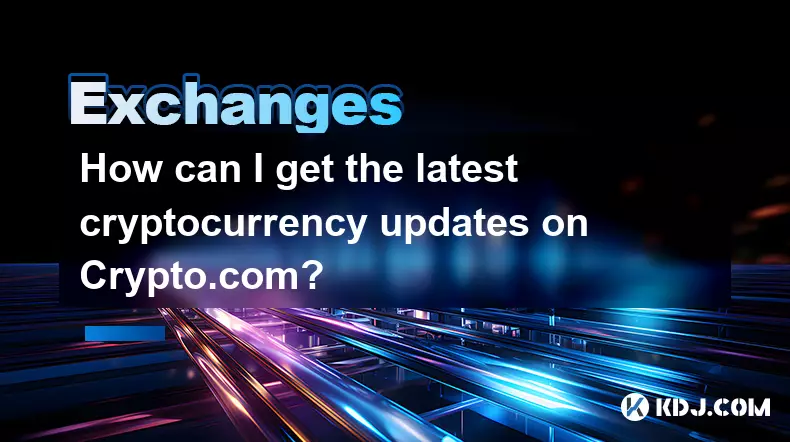
How can I get the latest cryptocurrency updates on Crypto.com?
Sep 26,2025 at 07:54am
Accessing Real-Time Crypto Market Data on Crypto.com1. Navigate to the Crypto.com website or open the mobile application to access live price charts a...
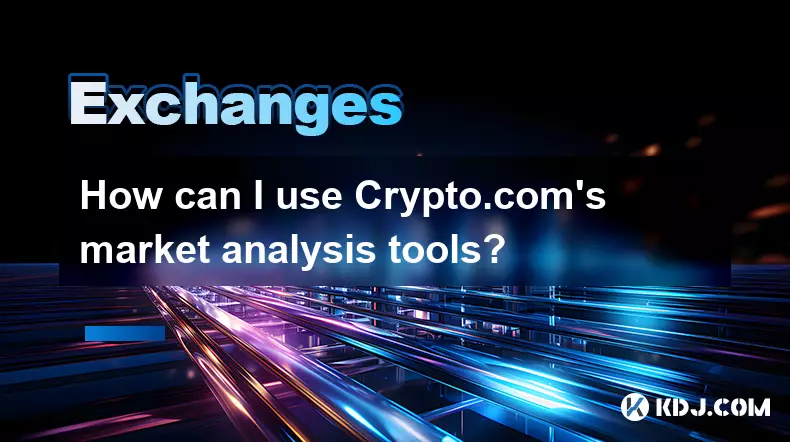
How can I use Crypto.com's market analysis tools?
Sep 23,2025 at 01:54am
Understanding Crypto.com’s Market Analysis Dashboard1. Accessing the market analysis tools begins with logging into your Crypto.com account through th...

Where can I view my Crypto.com asset transfer history?
Sep 27,2025 at 08:54pm
Accessing Your Crypto.com Asset Transfer History1. Log in to your Crypto.com app or web platform using your registered credentials. Once authenticated...

How can I unlink my Crypto.com payment method?
Sep 23,2025 at 12:54am
Understanding Payment Methods on Crypto.com1. Crypto.com allows users to link various payment methods including credit cards, debit cards, and bank ac...
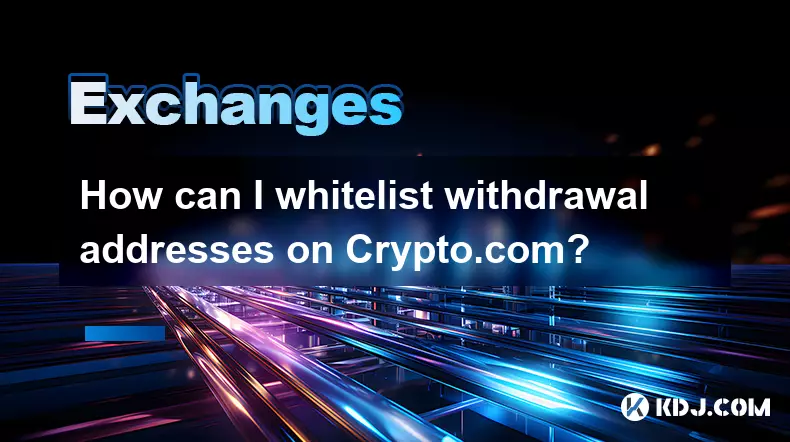
How can I whitelist withdrawal addresses on Crypto.com?
Sep 28,2025 at 03:19pm
Understanding Address Whitelisting on Crypto.comWhitelisting withdrawal addresses on Crypto.com is a security feature designed to protect users from u...
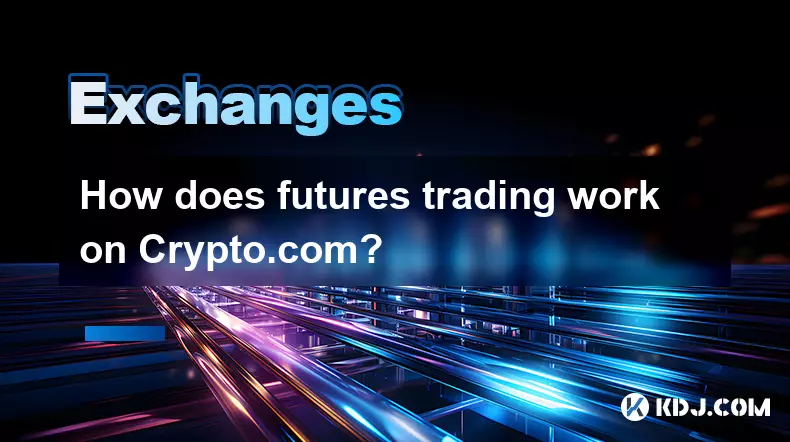
How does futures trading work on Crypto.com?
Sep 27,2025 at 06:37am
Futures Trading Mechanics on Crypto.com1. Futures trading on Crypto.com allows users to speculate on the future price of cryptocurrencies without owni...

How can I get the latest cryptocurrency updates on Crypto.com?
Sep 26,2025 at 07:54am
Accessing Real-Time Crypto Market Data on Crypto.com1. Navigate to the Crypto.com website or open the mobile application to access live price charts a...

How can I use Crypto.com's market analysis tools?
Sep 23,2025 at 01:54am
Understanding Crypto.com’s Market Analysis Dashboard1. Accessing the market analysis tools begins with logging into your Crypto.com account through th...

Where can I view my Crypto.com asset transfer history?
Sep 27,2025 at 08:54pm
Accessing Your Crypto.com Asset Transfer History1. Log in to your Crypto.com app or web platform using your registered credentials. Once authenticated...

How can I unlink my Crypto.com payment method?
Sep 23,2025 at 12:54am
Understanding Payment Methods on Crypto.com1. Crypto.com allows users to link various payment methods including credit cards, debit cards, and bank ac...

How can I whitelist withdrawal addresses on Crypto.com?
Sep 28,2025 at 03:19pm
Understanding Address Whitelisting on Crypto.comWhitelisting withdrawal addresses on Crypto.com is a security feature designed to protect users from u...

How does futures trading work on Crypto.com?
Sep 27,2025 at 06:37am
Futures Trading Mechanics on Crypto.com1. Futures trading on Crypto.com allows users to speculate on the future price of cryptocurrencies without owni...
See all articles





















